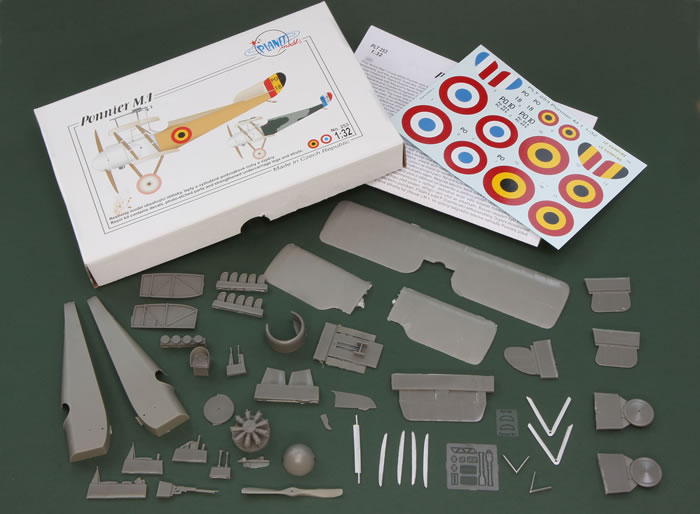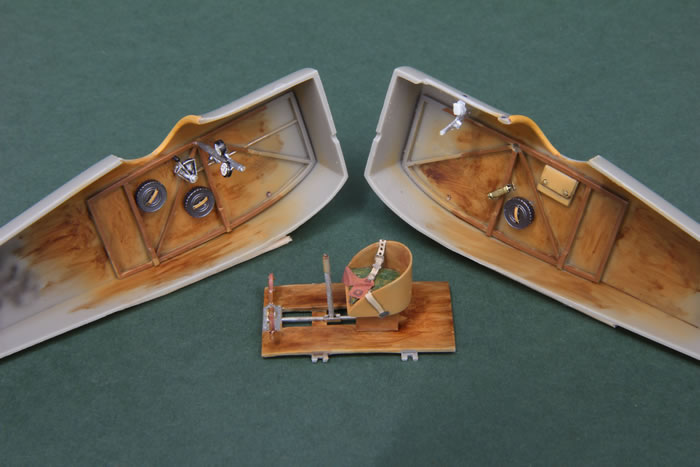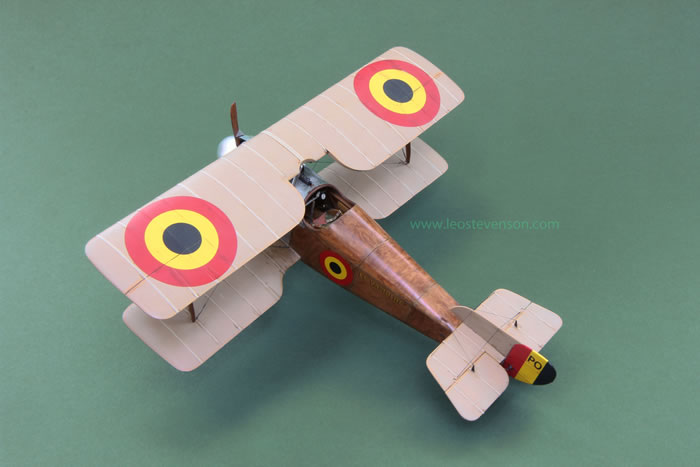Planet Models' 1/32 scale
Ponnier M.1
by Leo Stevenson

Airfix's 1/72 scale Hurricane Mk.I is available online from Squadron
One of the interesting contrasts between the number and range of military vehicle models available compared with military aircraft models is that vehicle modellers seem to have a much wider choice of subject matter to choose from, with all sorts of rare, experimental, weird or even historically bad designs represented, as well as the more familiar vehicles that have now become famous. This is not so true for aircraft modellers, especially in large scales. I am mainly a modeller of aircraft, so this is why this rare and unsuccessful Ponnier M.1 offered to us by Planet Models (based in the Czech Republic) is such an interesting exception to the much better known aircraft that we’re usually offered by kit manufacturers.
The Ponnier M.1 was a dud design that first took to the skies - but too regularly ploughed the ground - in 1915. Being too front-heavy, and with a woefully inadequate empennage, it was hard to control and too prone to spin, and so it proved to be as much use to the Belgian Air Force as a chocolate teapot. Its fate was sealed when future ace Charles Nungesser crashed in a Ponnier M.1, nearly killing him, and so in the end only about twenty M.1’s were ever built and it was soon consigned to the dustbin of history. In fairness though, there were aspects of this design that were very advanced, but given the rapidly increasing technological arms race of the time aircraft designers just couldn’t get everything right first time around, and some dead-ends such as this were inevitable.
I was very pleased when Planet Models announced this kit because in building my collection of WW1 models I hadn’t yet made one flown by the ‘Plucky little Belgians’ (to quote a WW1 song), and I thought that the Belgian roundels would add an interesting dash of colour to the usual cockades and crosses in my display cabinets. This particular aircraft was flown in 1915 by Sergeant Abel de Neef (1884-1970), who was based at Koksijde airfield which was just a short distance from the border with France.
This is a very well presented and thoughtfully made kit. It’s largely a resin kit, with white-metal cabane and interplane struts, as well as photo-etched parts for the seatbelts (nicely done), control horns, rigging turnbuckles and propeller bullet deflectors, and also two acetate film windscreens; the spare was handy for me when late-night clumsiness wrote one off – such thoroughness make me happy.

The interior is basic, but adequate. Most of the interior isn’t immediately visible so I did a workman like job in this area and saved my time for the exterior, for example the particularly visually satisfying contrast between the aluminium front and rich plywood colour of the rear fuselage.

I’ve made resin kits before, but this was a bit more of a challenge than average, so I wouldn't recommend it to anyone unfamiliar with resin. The fit of the components is generally good, but you don’t find many location pins, guide lines or dimples to tell you where parts should go except, thankfully, for the lower wing-fuselage junction and for the wing struts. The general lack of these locating aids isn’t meant as a criticism, but an observation to remind plastic modellers that you’re in different territory here, where careful measurement and study of period photos and plans are vital. These limited edition kits would cost more if they had more location aids built into all the components, so a compromise has to be reached, and an assumption has to be made by the manufacturer that the modeller has already got some experience under his belt. Fair enough.
One particularly tricky characteristic of this kit - which comes from the nature of accurately represented control surfaces - is that the edges of these parts are very thin even in 1/32 scale, and so great care has to be taken when gluing them together. Although it is possible to simply superglue them edge-to-edge, the edges of these components are rounded and so that would give you an extremely narrow contact surface between them if you relied on glue alone, making the model very fragile and difficult to handle. For this reason, I am now in the habit of strengthening these joins in all my WW1 models by inserting very thin brass dowels into pre-drilled holes between such delicate parts. This has to be done with great care and patience, particularly if, as in this case, the dowels are only 0.3mm diameter rods being inserted into 0.4mm holes. With this model I also did this with the undercarriage struts because I didn’t trust the bond I’d get between the white metal struts and the resin of the fuselage. The problem, as always, is that the white metal alloy contains zinc, and this acts as an inhibitor to the superglue and although you can make a successful join a really strong bond is never possible, certainly when compared to supergluing resin-to-resin or brass or copper components.
I enjoyed making this very agreeable kit, and there are many pleasing things about it, notably the quality of the decals and general level of detail, but be warned that the otherwise good instructions have a great howling error in them with the illustration of the engine which shows the induction pipes on the wrong side of the engine. These Ponnier M.1’s had 80hp Le Rhône 9C engines which had the copper induction pipes on the front side of the engine, not at the back as shown in the instructions, which would only be correct for the later Le Rhône 9J engines which weren’t used on this aircraft as far as I know. There is also a missing leather-rimmed exit for two of the control cables going to the control horns on the elevator, but that’s easily added with two slithers of thin plasticard strip glued to the fuselage and then an angled hole/slot drilled into them.

This model was mostly built ‘OOB’, but I made a few other improvements to the kit as supplied, including adding push rods to the engine, engraving panel lines into the fuselage based on my assumptions about the size and position of the plywood panelling – a guess, because no original Ponnier M.1’s survive and period photos of this plane all seem to be frustratingly poor in quality. Finally, the construction was finished off when I added bungee cord shock absorbers to the undercarriage, making them from 0.37mm copper wire.
I didn’t use the photo-etched rigging turnbuckles that came with the kit and instead used ones made by Gaspatch Models, preferring their ‘three-dimensionality’ to the flatness of the Planet Models ones. Now, in retrospect, looking at the photos of this model, I think that the kit’s own ones might have been better after all, but hey, if we’re not allowed to make mistakes where’s the fun in this? I might correct this one day.
The kit comes with a colour sheet showing the decal and painting guide, which is nice in theory, but the colour illustrations are a bit odd, showing the aircraft with pink tyres (!) and De Neef’s plane with plywood fuselage sides that are far lighter than is seen in period photographs of his machine, which seem to show a dark (brown?) stained finish.

The decals include options for depicting three aircraft; one French and two Belgian. I chose De Neef’s aircraft because I was attracted to making the quirky and sometimes dangerous bullet deflectors on the propeller (this was before the allies had interrupter gear), and the rather optimistically hostile sounding name ‘Le Vampire’ on the fuselage.
This was a vampire whose teeth didn’t sink into any Germans, but nonetheless I’m pleased to have had the opportunity to depict this rare piece of aviation history. Planet Models also make some other resin kits of equally rare and interesting World War 1 aircraft, and I’m looking forward to making some of those in due course.
Watch this space!
Model, Images and Text Copyright ©
2014 by Leo Stevenson
Page Created 26 November, 2014
Last Updated
26 November, 2014
Back to HyperScale Main Page
|
Home
| What's New | Features | Gallery | Reviews | Reference | Resource Guides | Forum |